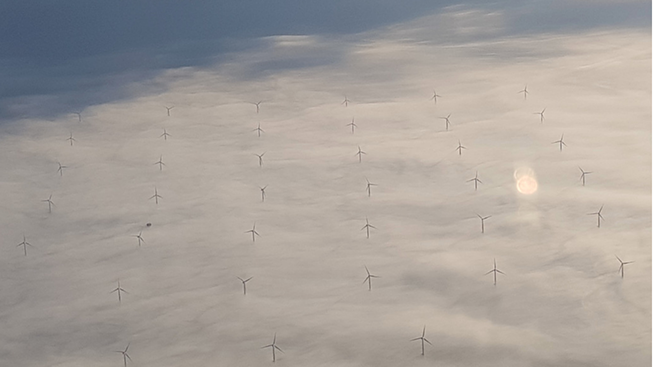Boundary layer processes
The atmospheric boundary layer (ABL) spans the lowest few hundred meters of the Earth’s atmosphere and exchanges water vapor, pollutants, momentum, and heat with the underlying surface. In our group, we study turbulence in the ABL through a synergy of novel observational techniques, such as distributed temperature sensing, scintillometry, multi-scale modelling approaches, such as direct numerical simulation (DNS), Large-Eddy Simulation (LES), grey-zone simulations and mesoscale modelling. We also borrow from a suite of tools from the field of dynamical systems (e.g., chaos and multifractals).

Photograph of the Luchterduinen wind farm near the Dutch coast on March 11, 2018. Image courtesy: Sukanta Basu).
The ABL has immense practical importance, because many natural, biological, and industrial activities take place in this turbulent layer. For example, we are investigating if our predictive ability of offshore wind and turbulence can be improved via state-of-the-art coupled atmosphere-ocean-wave modelling. This research has strong implications for the offshore wind energy developments over the North Sea (see Figure). We are using similar modelling techniques to quantify long-range optical wave propagation. Under very stable conditions with little turbulence, light rays bend and can travel far beyond the horizon. Accurate modelling of such phenomena is immensely useful for various applications including active imaging, long-range video surveillance, laser target tracking, and electro-optical communications.